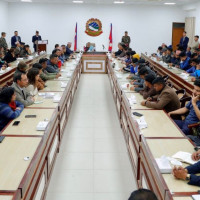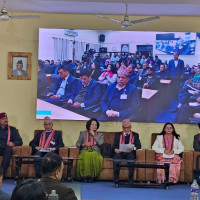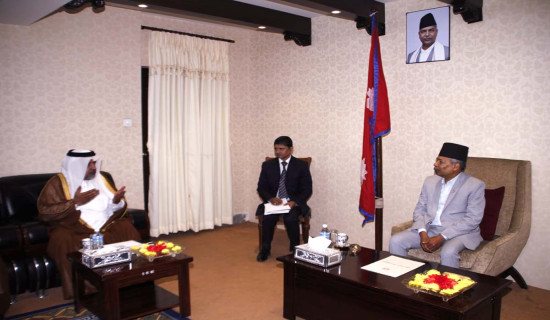- Wednesday, 10 December 2025
Monsoon yet to be fully active across Nepal
Kathmandu, June 19: On Monday afternoon, Pramod Shrestha from Madhyapur Thimi had quite a confusing ride to Kathmandu. Between Naya Thimi and Koteshwor, he ended up putting on and taking off his raincoat three times!
“It started raining in Gatthaghar, so I wore my raincoat. But by the time I reached Kaushaltar, the rain had stopped, so I took it off. Then it rained again in Lokanthali, and once more, it was dry when I got to Koteshwor,” he said.
“I was getting irritated but could not help laughing at myself,” Pramod said, describing the strange ride. His friends had often told him about such experiences, but he never imagined it could be this bizarre. “I still do not understand why the rain behaves so strangely in such a short stretch,” he added, puzzled by the unpredictable weather.
Across the country, people are witnessing increasingly unusual rainfall patterns during the monsoon. According to experts, this erratic behaviour has been growing more noticeable in recent years.
On Friday, areas like Kumaripati and Godavari in Lalitpur were lashed by heavy rain, causing flooding in some places. Yet, just a few kilometers away, the northern part of Lalitpur and much of Kathmandu remained completely dry.
Watershed expert Madhukar Upadhya said this kind of isolated rainfall has become even more localized than in previous years—and the trend is intensifying. “It has already been 19 days since the monsoon entered the country, but it’s still limited to just five provinces,” he said. “There’s no even distribution of rainfall among them either.”
Upadhya added that rains are becoming more concentrated in short bursts, which has increased the risk of disasters like floods and landslides.
“Localised rainfall with high intensity over short periods has increased and is causing more damage to people and infrastructure,” Upadhya said. He also urged residents in urban areas to clear drainage systems and keep rivers clean to reduce the risk of flooding and minimise damage.
Dr. Binod Pokharel, Associate Professor at the Central Department of Hydrology and Meteorology at Tribhuvan University, said that the monsoon system is still weak and not yet fully active across the country, as Nepal remains under the influence of westerly winds. “The current system is convective due to the westerlies, which is why local convection is causing heavy rainfall in areas like Thori on Wednesday,” he explained.
According to Binu Maharjan, a meteorologist at the Meteorological Forecasting Division under the Department of Hydrology and Meteorology, the country is still experiencing isolated rainfall because the monsoon has not yet been fully activated.
“The monsoon is not fully active, and local winds are causing isolated heavy rain. Instead of being dominated by easterly winds typical of the monsoon, the country is still under the influence of the westerlies,” she explained.
“The system is gradually becoming active as a low-pressure system from the Bay of Bengal is moving into the country, which is expected to bring rainfall across the country with expansion of system to remaining provinces,” she said.







-square-thumb.jpg)








